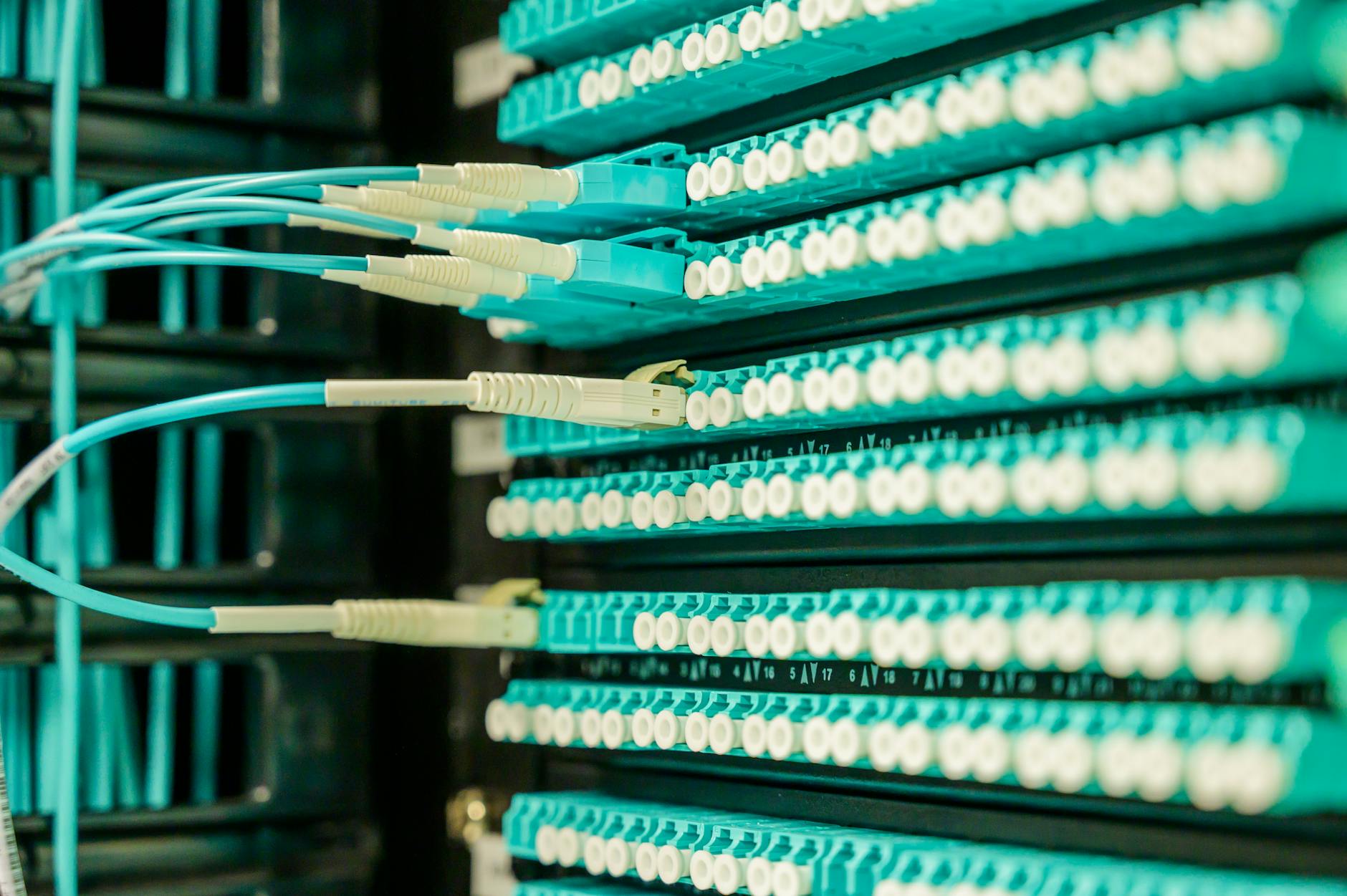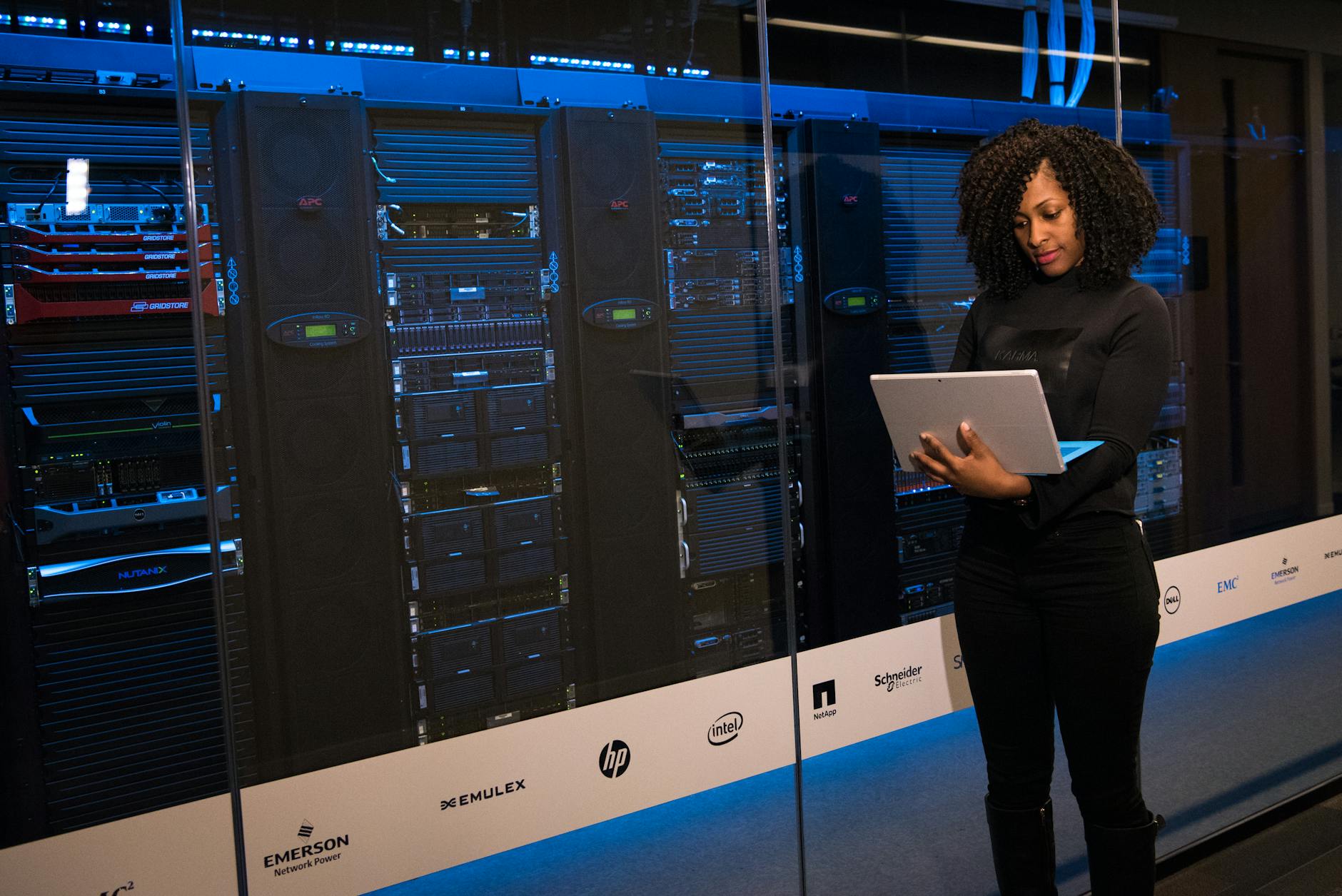Aruba SD-Branch Solution with Aruba Central
Aruba SD-Branch Solution with Aruba Central
🌐 Revolutionize Your Branch Network: Aruba SD-Branch with Central
In today’s fast-paced digital landscape, managing branch networks can feel like herding cats. Slow connections, security vulnerabilities, and complex management systems plague IT teams everywhere. But what if there was a solution that could transform your branch network into a streamlined, secure, and easily manageable powerhouse?
Enter Aruba SD-Branch with Aruba Central. This cutting-edge solution is changing the game for businesses of all sizes, offering a comprehensive approach to branch networking that combines simplicity, security, and performance. From understanding the core concepts to optimizing network performance and enhancing security, we’ll explore how Aruba SD-Branch can revolutionize your branch operations and deliver tangible business impact. Let’s dive into the world of smart, efficient branch networking and discover how you can stay ahead of the curve. 👨💻🚀
Understanding Aruba SD-Branch

A. Definition and core components
Aruba SD-Branch is a comprehensive solution that combines Software-Defined Wide Area Network (SD-WAN) technology with branch networking to create a unified, cloud-managed infrastructure. The core components of Aruba SD-Branch include:
- Aruba Branch Gateways
- Aruba Access Points
- Aruba Switches
- Aruba Central (cloud-based management platform)
| Component | Function |
|---|---|
| Branch Gateways | Provide routing, security, and SD-WAN capabilities |
| Access Points | Enable wireless connectivity for branch locations |
| Switches | Facilitate wired connectivity and network segmentation |
| Aruba Central | Centralized management and orchestration platform |
B. Benefits for modern enterprises
Aruba SD-Branch offers numerous advantages for businesses:
- Simplified management: Centralized control through Aruba Central
- Cost reduction: Optimized WAN usage and reduced hardware requirements
- Enhanced security: Built-in firewalls and advanced threat protection
- Improved performance: Intelligent traffic routing and application prioritization
- Scalability: Easy deployment and management of multiple branch locations
C. Integration with existing network infrastructure
Aruba SD-Branch is designed to seamlessly integrate with existing network setups:
- Supports hybrid WAN environments
- Compatible with various transport technologies (MPLS, broadband, cellular)
- Integrates with third-party security tools and cloud services
- Enables gradual migration from legacy systems to SD-Branch architecture
This flexibility allows organizations to leverage their current investments while transitioning to a more efficient and agile network infrastructure. As we explore the key features of Aruba SD-Branch in the next section, we’ll see how these components work together to create a powerful, unified branch networking solution.
Key Features of Aruba SD-Branch
Centralized management and control
Aruba SD-Branch offers a comprehensive centralized management and control system, allowing IT teams to efficiently oversee their entire network infrastructure from a single pane of glass. This feature streamlines operations and reduces the complexity of managing multiple branch locations.
Key benefits of centralized management:
- Simplified network administration
- Reduced operational costs
- Improved visibility and control
- Faster problem resolution
- Consistent policy enforcement
Automated provisioning and configuration
One of the most powerful features of Aruba SD-Branch is its ability to automate the provisioning and configuration of network devices across multiple branch locations. This automation significantly reduces deployment time and minimizes human errors.
| Traditional Approach | Aruba SD-Branch Approach |
|---|---|
| Manual configuration | Zero-touch provisioning |
| Time-consuming | Rapid deployment |
| Error-prone | Consistent and accurate |
| Limited scalability | Highly scalable |
Advanced security capabilities
Aruba SD-Branch integrates robust security features to protect branch networks from evolving threats. These capabilities include:
- Next-generation firewall
- Intrusion detection and prevention
- Web content filtering
- Application-aware traffic management
- VPN tunneling for secure connectivity
WAN optimization and traffic steering
To ensure optimal performance across branch locations, Aruba SD-Branch incorporates advanced WAN optimization and intelligent traffic steering capabilities. These features work together to:
- Prioritize critical applications
- Reduce latency and packet loss
- Optimize bandwidth utilization
- Ensure seamless failover between WAN links
By leveraging these key features, organizations can create a more agile, secure, and efficient branch network infrastructure. Next, we’ll explore how Aruba Central serves as the management powerhouse for the SD-Branch solution, further enhancing its capabilities and ease of use.
Aruba Central: The Management Powerhouse

Cloud-native architecture
Aruba Central’s cloud-native architecture forms the backbone of its powerful management capabilities. This design offers several advantages over traditional on-premises solutions:
- Flexibility: Easily scale resources up or down based on demand
- Reliability: Built-in redundancy and automatic failover mechanisms
- Cost-effectiveness: Pay-as-you-go model reduces upfront investment
Here’s a comparison of cloud-native vs. on-premises architectures:
| Feature | Cloud-native | On-premises |
|---|---|---|
| Scalability | Highly scalable | Limited by hardware |
| Maintenance | Automated updates | Manual updates |
| Accessibility | Access from anywhere | Limited to local network |
| Cost model | OpEx | CapEx |
Intuitive dashboard and reporting
Aruba Central’s user-friendly interface simplifies network management:
- Customizable widgets for at-a-glance insights
- Role-based access control for team collaboration
- Real-time monitoring of network health and performance
- Automated report generation for compliance and auditing
AI-powered insights and recommendations
Leveraging artificial intelligence, Aruba Central provides:
- Predictive analysis of network issues
- Automated root cause analysis
- Actionable recommendations for optimization
- Anomaly detection and security threat identification
Scalability for growing networks
As businesses expand, Aruba Central effortlessly scales to accommodate growth:
- Support for thousands of devices across multiple sites
- Seamless integration of new branch locations
- Automatic provisioning of network devices
- Centralized policy management for consistent experiences
With these powerful features, Aruba Central serves as the cornerstone for efficient SD-Branch management. Next, we’ll explore the process of deploying the Aruba SD-Branch solution to leverage these capabilities effectively.
Deploying Aruba SD-Branch Solution

Planning and network assessment
Before deploying Aruba SD-Branch, a thorough planning and network assessment is crucial. This process involves evaluating the existing network infrastructure, identifying potential bottlenecks, and determining the specific requirements for each branch location.
Key steps in the planning phase include:
- Site surveys
- Bandwidth requirements analysis
- Application prioritization
- Security needs assessment
- Scalability considerations
Here’s a sample network assessment checklist:
| Assessment Area | Key Considerations |
|---|---|
| Existing Infrastructure | Current hardware, software versions, network topology |
| Bandwidth | WAN link capacity, application requirements |
| Security | Compliance needs, threat landscape, data protection |
| Scalability | Future growth projections, potential new applications |
| User Experience | Performance expectations, critical applications |
Hardware selection and placement
Once the assessment is complete, the next step is selecting and placing the appropriate hardware. Aruba offers a range of SD-Branch gateways and access points to suit various deployment scenarios.
Key considerations for hardware selection:
- Branch size and user density
- Required throughput and connectivity options
- Power over Ethernet (PoE) requirements
- Environmental factors (temperature, humidity, etc.)
Configuration and policy setup
With hardware in place, the focus shifts to configuration and policy setup. This stage leverages Aruba Central’s intuitive interface to streamline the process.
Configuration steps typically include:
- Network segmentation and VLAN setup
- WAN uplink configuration
- Security policy implementation
- Quality of Service (QoS) rules
- VPN tunnel establishment
Testing and validation
The final phase involves comprehensive testing and validation to ensure the SD-Branch solution meets performance and security expectations. This includes:
- Connectivity tests
- Failover scenarios
- Application performance verification
- Security policy effectiveness checks
Optimizing Network Performance with SD-Branch
Traffic prioritization and QoS
Aruba SD-Branch solution excels in optimizing network performance through intelligent traffic prioritization and Quality of Service (QoS) mechanisms. By implementing advanced QoS policies, businesses can ensure that critical applications receive the necessary bandwidth and priority, resulting in improved user experience and productivity.
Key QoS features:
- Dynamic bandwidth allocation
- Application-based prioritization
- DSCP marking and remarking
- Traffic shaping and policing
| Priority Level | Application Type | Bandwidth Allocation |
|---|---|---|
| High | VoIP, Video Conferencing | 40% |
| Medium | CRM, ERP Systems | 30% |
| Low | General Internet Browsing | 20% |
| Best Effort | File Downloads, Updates | 10% |
Bandwidth management
Effective bandwidth management is crucial for maintaining optimal network performance across branch locations. Aruba SD-Branch provides sophisticated tools to allocate and control bandwidth usage, ensuring that all users and applications have access to the resources they need.
Bandwidth management techniques:
- Dynamic path selection
- Load balancing across multiple WAN links
- Bandwidth reservation for critical services
- Real-time monitoring and adjustment
Application awareness and routing
Aruba SD-Branch’s application awareness capabilities enable intelligent routing decisions based on the specific needs of different applications. This granular control allows for optimized performance and reduced latency for business-critical applications.
- Deep Packet Inspection (DPI) for accurate application identification
- Policy-based routing for application-specific traffic steering
- Integration with cloud security services for enhanced protection
By leveraging these advanced features, organizations can significantly improve their network performance, ensuring seamless connectivity and optimal user experience across all branch locations.
Enhancing Security Across Branch Locations

Zero Trust Security model
The Aruba SD-Branch solution implements a Zero Trust Security model, which assumes no implicit trust in any user, device, or network. This approach significantly enhances security across branch locations by:
- Continuous verification
- Least privilege access
- Micro-segmentation
- Multi-factor authentication
| Zero Trust Principle | Description |
|---|---|
| Continuous verification | Constantly authenticates and authorizes users and devices |
| Least privilege access | Grants minimal necessary permissions |
| Micro-segmentation | Isolates network segments for better control |
| Multi-factor authentication | Requires multiple forms of identification |
Built-in firewall and intrusion prevention
Aruba SD-Branch incorporates robust security features to protect branch networks:
- Next-generation firewall capabilities
- Deep packet inspection
- Intrusion Detection and Prevention System (IDS/IPS)
- Application-aware filtering
These features work together to create a comprehensive security barrier against various threats.
VPN tunneling and encryption
To secure data transmission between branch locations and the central network:
- IPsec VPN tunneling
- Advanced encryption protocols
- Automatic tunnel failover
- Split-tunneling capabilities
Role-based access control
Aruba SD-Branch leverages role-based access control (RBAC) to enhance security by:
- Assigning specific roles to users and devices
- Controlling access based on job responsibilities
- Implementing granular permission settings
- Simplifying user management across branches
This approach ensures that users only have access to the resources necessary for their roles, minimizing potential security risks.
Troubleshooting and Maintenance

Real-time monitoring and alerts
Aruba SD-Branch offers robust real-time monitoring capabilities, ensuring network administrators stay ahead of potential issues. The solution provides comprehensive visibility into network performance, security events, and device status across all branch locations.
Key features of real-time monitoring include:
- Dynamic dashboards
- Customizable alerts
- Performance metrics
- Traffic analysis
| Metric | Description | Importance |
|---|---|---|
| Latency | Measures delay in data transmission | Critical for VoIP and video |
| Packet Loss | Percentage of lost data packets | Affects application performance |
| Bandwidth Utilization | Network capacity usage | Helps identify bottlenecks |
| Security Events | Detected threats or anomalies | Crucial for maintaining security |
Administrators can set up custom alerts based on specific thresholds, ensuring prompt notification of critical events. This proactive approach minimizes downtime and enhances overall network reliability.
Remote diagnostics and problem resolution
With Aruba SD-Branch, IT teams can efficiently diagnose and resolve issues without the need for on-site visits. The solution offers a suite of remote troubleshooting tools, including:
- Network packet capture
- Device logs analysis
- Configuration audits
- Virtual network tests
These tools enable administrators to quickly identify the root cause of problems and implement solutions remotely. This capability significantly reduces mean time to repair (MTTR) and improves overall operational efficiency.
Firmware updates and patch management
Keeping network devices up-to-date is crucial for maintaining security and performance. Aruba SD-Branch simplifies this process through:
- Centralized firmware management
- Scheduled updates
- Automatic patch deployment
- Rollback capabilities
This streamlined approach ensures all branch locations remain current with the latest features and security patches. Administrators can schedule updates during off-peak hours to minimize disruption to business operations.
ROI and Business Impact
A. Cost savings on hardware and management
Implementing Aruba SD-Branch solution can lead to significant cost savings for organizations. By consolidating multiple network functions into a single platform, businesses can reduce their hardware footprint and associated costs. Here’s a breakdown of potential savings:
| Area | Cost Reduction |
|---|---|
| Hardware | Up to 40% |
| Management | Up to 30% |
| Maintenance | Up to 25% |
| Energy consumption | Up to 20% |
These savings are achieved through:
- Elimination of separate appliances for routing, firewall, and WAN optimization
- Centralized management reducing IT staff workload
- Simplified maintenance and updates
- Lower power consumption due to fewer devices
B. Improved operational efficiency
SD-Branch technology streamlines network operations, leading to improved efficiency across the organization. Key benefits include:
- Centralized management through Aruba Central
- Automated provisioning and configuration
- Real-time visibility into network performance
- Rapid troubleshooting and issue resolution
C. Enhanced user experience and productivity
The Aruba SD-Branch solution directly impacts user experience and productivity by:
- Ensuring consistent application performance
- Reducing network downtime
- Enabling seamless roaming across branch locations
- Providing reliable access to cloud-based applications
D. Future-proofing the network infrastructure
Investing in Aruba SD-Branch helps organizations prepare for future network demands:
- Scalability to accommodate business growth
- Flexibility to adapt to emerging technologies
- Support for IoT and edge computing initiatives
- Regular software updates to maintain security and performance
By implementing Aruba SD-Branch, businesses can achieve substantial ROI through cost savings, improved efficiency, enhanced user experience, and a future-ready network infrastructure. This comprehensive solution positions organizations to meet current and future networking challenges effectively.

Aruba SD-Branch, powered by Aruba Central, offers a comprehensive solution for modernizing and streamlining branch network operations. By combining SD-WAN, routing, and security features with centralized cloud management, organizations can significantly improve network performance, enhance security, and simplify management across distributed locations. The solution’s key features, including zero-touch provisioning, intelligent path selection, and advanced security measures, enable businesses to optimize their branch networks effectively.
Implementing Aruba SD-Branch can lead to substantial returns on investment, from reduced operational costs to improved productivity and enhanced customer experiences. As businesses continue to evolve and embrace digital transformation, adopting a robust SD-Branch solution becomes crucial for maintaining a competitive edge. Consider exploring Aruba SD-Branch to revolutionize your branch network infrastructure and unlock new possibilities for your organization’s growth and success.











